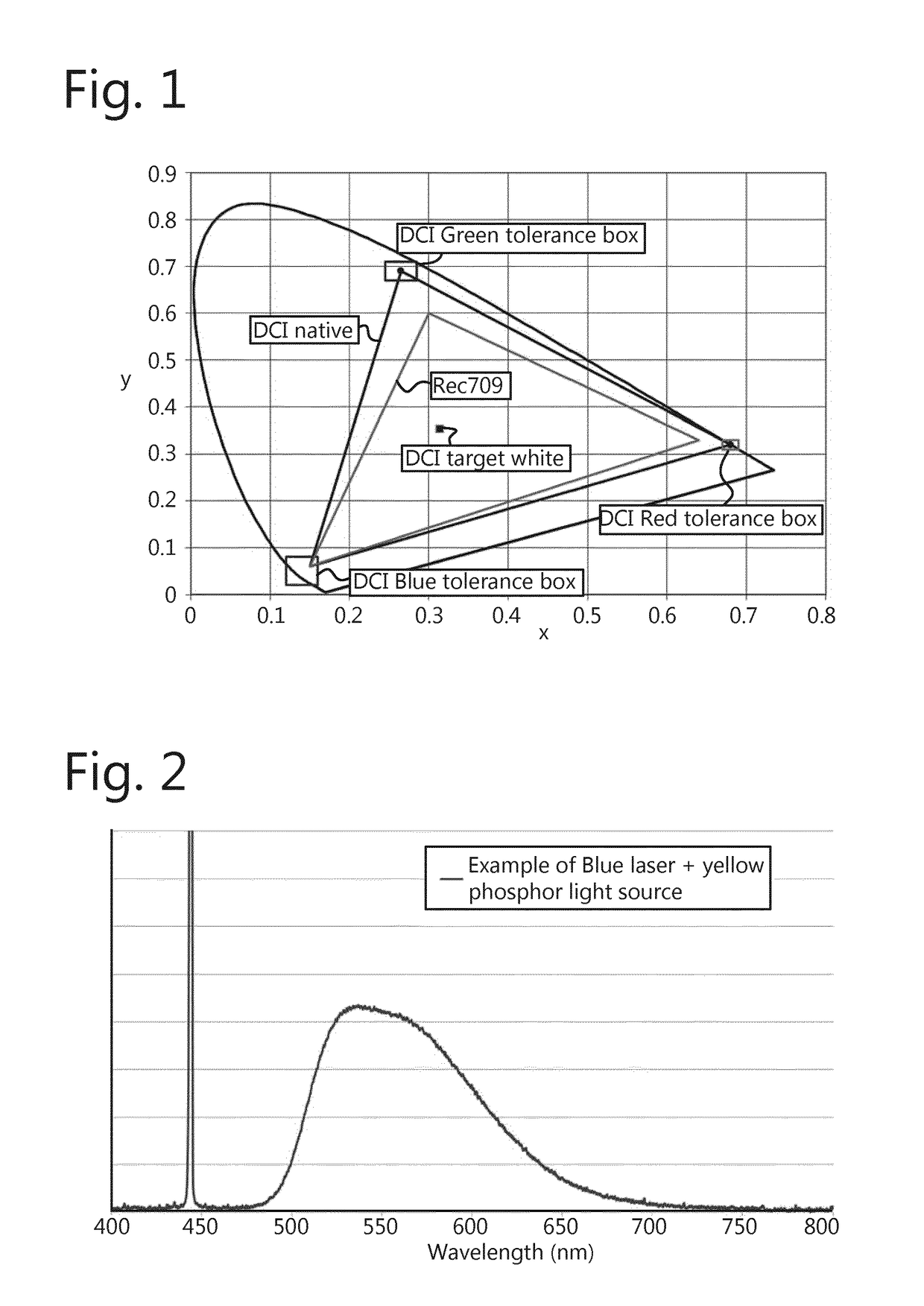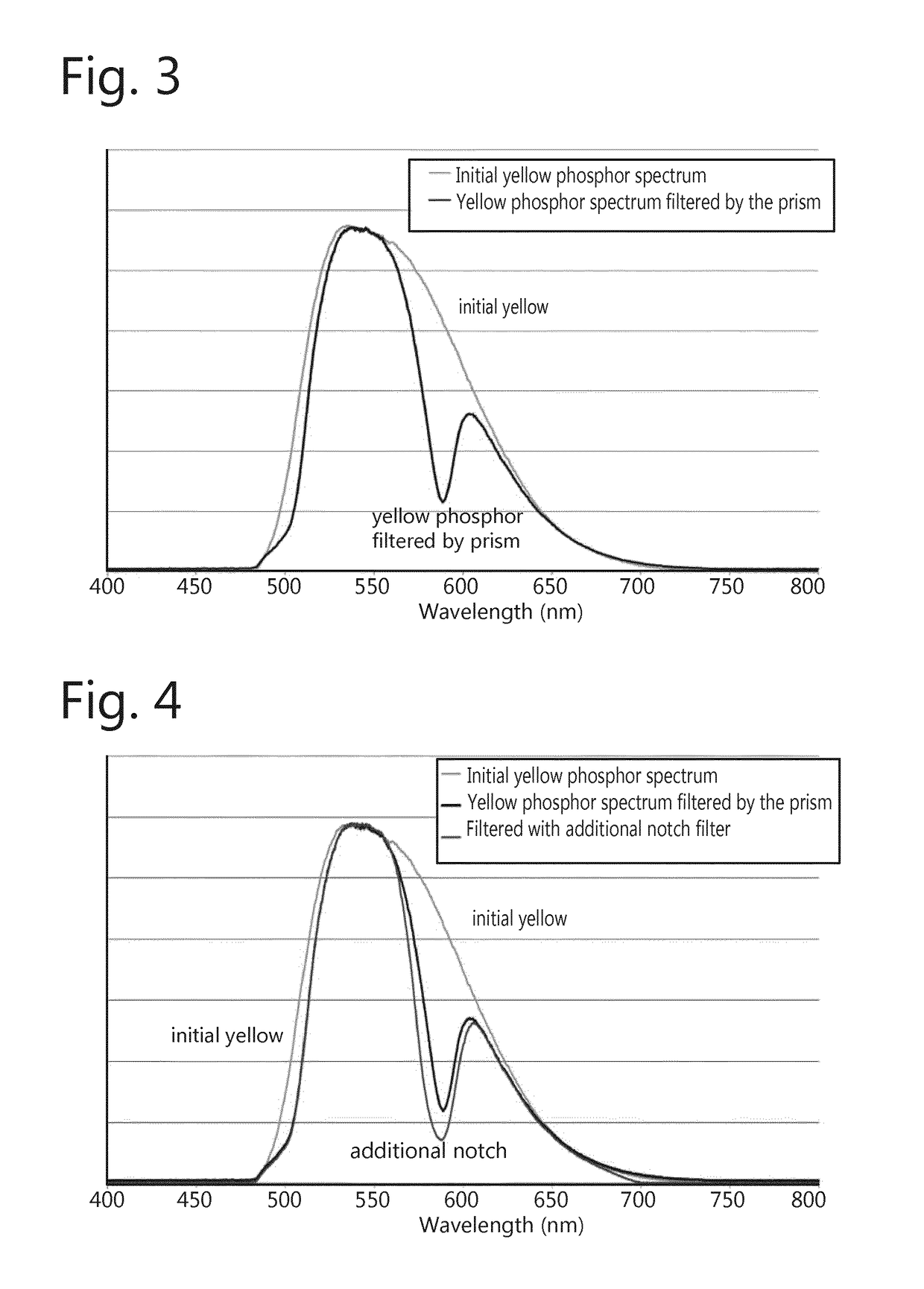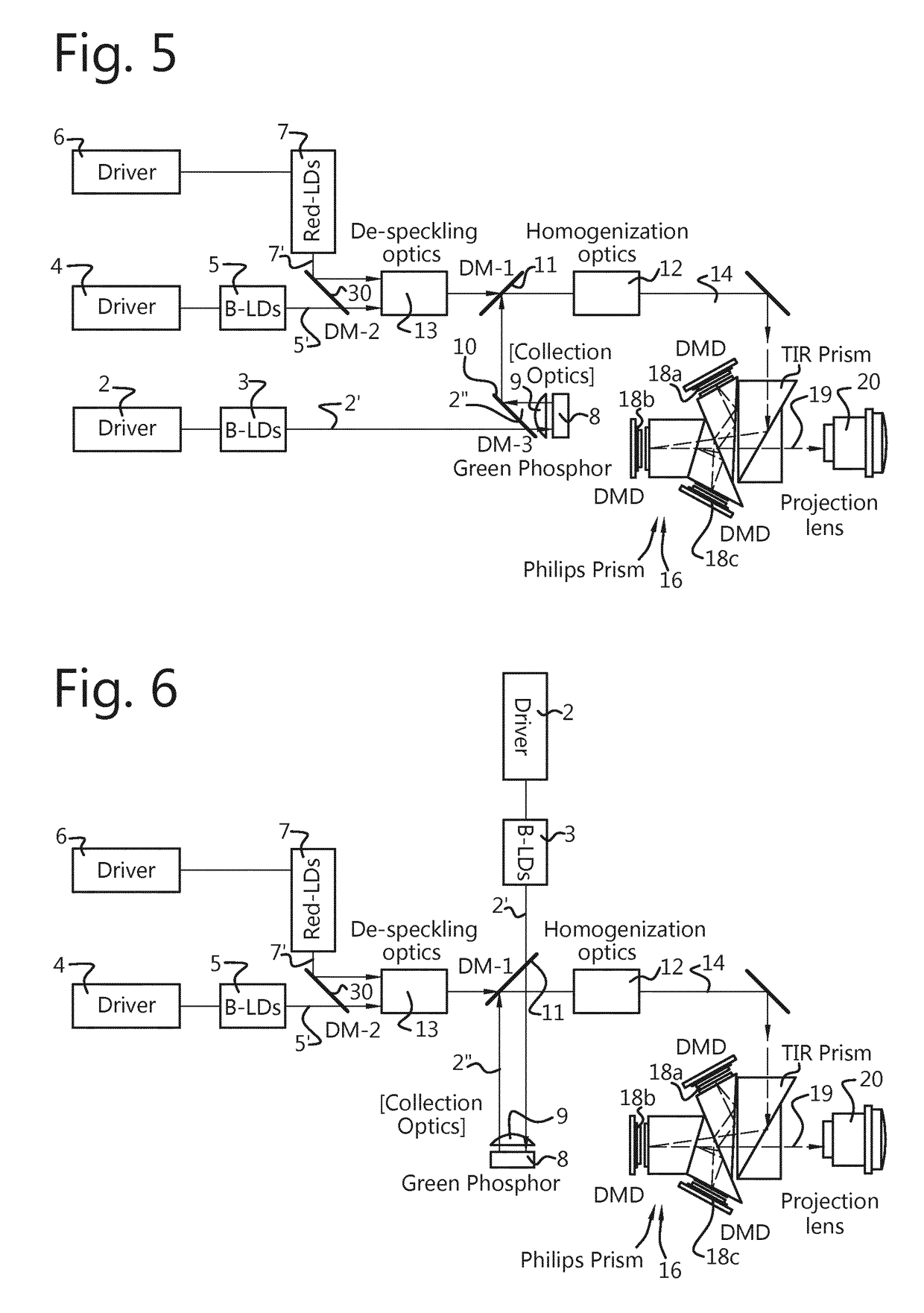Control of color primaries and white point in a laser-phosphor projector
a projector and laser-phosphor technology, applied in the field of optical sub-assembly, a projector, can solve the problems of color splitting and recombination engines, similar problems can occur, etc., and achieve the effect of reducing or minimizing the loss of ligh
- Summary
- Abstract
- Description
- Claims
- Application Information
AI Technical Summary
Benefits of technology
Problems solved by technology
Method used
Image
Examples
second embodiment
[0360]In accordance with a second embodiment according to the present invention, the wavelength conversion element 8 shown in FIG. 5 or in FIG. 6 can be a yellow phosphor, in which case the light emitted by the conversion element has a spectrum similar to state of the art projectors, as the one illustrated in FIG. 3.
[0361]The yellow phosphor is responsible for the generation of the primary red and green, however, with an excess of green and intermediate wavelengths located between the primary green and red, leading to a desaturation of primary colors as described previously. However, an important distinction with respect to prior art projectors pertains to the use of two independent lasers for the generation of the blue primary color and for exciting the wavelength conversion element, thereby increasing the number of degrees of freedom for controlling the white point of the projector.
[0362]As the red primary color is provided by the wavelength conversion element, the red laser becom...
PUM
 Login to View More
Login to View More Abstract
Description
Claims
Application Information
 Login to View More
Login to View More - R&D
- Intellectual Property
- Life Sciences
- Materials
- Tech Scout
- Unparalleled Data Quality
- Higher Quality Content
- 60% Fewer Hallucinations
Browse by: Latest US Patents, China's latest patents, Technical Efficacy Thesaurus, Application Domain, Technology Topic, Popular Technical Reports.
© 2025 PatSnap. All rights reserved.Legal|Privacy policy|Modern Slavery Act Transparency Statement|Sitemap|About US| Contact US: help@patsnap.com



